Scroll to:
The Use of Straw, Coal and Foam to Improve Thermal and Mechanical Properties of Polyurethane
https://doi.org/10.23947/2541-9129-2025-9-1-72-80
EDN: KPYSHG
Abstract
Introduction. Polyurethane, a material composed of polyol and isocyanate, has been recognized as one of the most efficient thermal insulation materials. However, its insulating properties can be further enhanced by incorporating additives such as straw, coal, or foam. Nevertheless, there is a concern regarding the potential for reduced adhesion. The literature describes the introduction of additives into polyurethane as strengthening components. The limited volumes of fillers are justified by the need to maintain the uniformity of the samples. It should be noted that most additives did not significantly impact the thermal properties of the material. The aim of this research is to investigate the possibility of improving thermal and mechanical characteristics of polyurethane by adding fillers.
Materials and Methods. Samples of polyurethane from the company "Daumerk" (Turkey), with various additives, were experimentally studied. In the first stage, four samples were prepared without fillers, and in the second stage, six more samples were created with 5% and 10% additions of coal, straw, and foam. Thermal conductivity was assessed using a hot plate method, while compression testing was conducted using a device that could apply loads up to 5,000 N. Acoustic properties were measured with an instrument that evaluated the sound absorption coefficient.
Results. The sample containing 63% isocyanate and 37% polyol had the lowest density of 33 kg/m³. This was due to the absence of fillers and the homogeneous structure of the material. Adding 5% fillers did not significantly affect the density of the sample because the densities of straw and foam were close to the density of polyurethane without additives. Low water absorption was found in samples without additives (50% isocyanate and 50% polyol) and with 5% addition of foam (62% isocyanate and 33% polyol). As the proportion of isocyanate increased, water absorption increased. Samples with higher density and no fillers had better sound absorption. With a low additive content (5%), sound absorption increased due to the homogeneity of the structure. However, with a higher additive volume (10%), sound absorption decreased due to weaker bonds in the material. Adding 10% foam provided maximum resistance to water.
Discussion and Conclusion. The optimal filler content improves thermal, mechanical, and acoustic properties of polyurethane, opening up new possibilities for its application. However, a large volume of fillers can have a negative effect on the material's properties. For example, a high straw content can significantly increase water absorption. Therefore, it is recommended to use 5% straw content in combination with 62% isocyanate and 33% polyol, resulting in a thermal conductivity of 0.023 W/m·K, a density of 37 kg/m³, and a compressive strength of 358 kN/m². These results confirm the feasibility and possibility of using fillers, such as coal and straw, in the production of polyurethane materials. A modified composition with these fillers would be cheaper and possess better physical properties than the original material. Further research could focus on studying other types of fillers for polyurethane.
Keywords
For citations:
Antibas I.R. The Use of Straw, Coal and Foam to Improve Thermal and Mechanical Properties of Polyurethane. Safety of Technogenic and Natural Systems. 2025;9(1):72-80. https://doi.org/10.23947/2541-9129-2025-9-1-72-80. EDN: KPYSHG
Introduction. The global energy agenda has led to active research on thermal insulation materials. The effectiveness of these materials is studied in relation to their characteristics and composition [1]. Polyurethane, hardened foam made of polyol and isocyanate, is considered one of the best insulating materials [2]. Natural fillers can be added to the composition to improve its performance, but only in small amounts, as excessive use can lead to decreased adhesion [3].
The scientific literature provides evidence that the addition of straw and coal can improve thermal, mechanical and acoustic properties of polyurethane [4].
The authors [5] obtained a set of samples by mixing purified soil heated to a temperature of 105°C with polyurethane components. Some samples were shaped, others were taken after free foaming. Compression, flexibility, fluidity, and freezing tests were performed. The results were compared with experimental data on marble, ceramic, and basalt samples. It was found that the mixture with purified soil has the best impact strength. However, it is necessary to take into account the lower specific gravity of polyurethane samples.
The researchers [6] integrated recycled and pure polyurethane in various ratios (maximum — 10%). The samples with increased amount of recycled polyurethane foamed faster and had better tensile and compressive characteristics.
In [7], walnut and hazelnut shells are considered as filler for polyurethane. It has been proven that these additives combine well with polyurethane components. Even their small amount increases the mechanical properties and thermal stability of samples.
The possibility of using silica gel as a reinforcing additive for polyurethane was shown in [8]. Four samples containing 0%, 1%, 3% and 5% silica gel were studied. The tests showed that at 5%, thermal conductivity decreased to 0.0268 (W/m·K) compared to a material without a filler of 0.0314 (W/m·K). Stress and compressive strengths increased by 18% with the addition of 3% silica gel, but decreased if the filler volume exceeded 3%.
The author [9] added grain hulls and rubber from recycled tires to polyurethane. The optimal proportion of additives has been established: 5% of grain hulls and 15% of rubber. This ratio ensures the maximum mechanical strength of the material.
The aim of the scientific research described in this article is to study the possibility of improving the properties of polyurethane using additives: straw, coal and foam. It is assumed that the proposed solution will reduce thermal conductivity while maintaining good mechanical, acoustic and physical characteristics. In this case, it will be possible to talk about the economic feasibility of using modified material to increase the energy efficiency of facilities. Moreover, the composition itself should be more affordable, since polyurethane components are partially replaced by cheap fillers.
Materials and Methods. During thermal, physical, mechanical, and acoustic testing, samples of Daumerk polyurethane (Turkey) with and without additives were examined.
Sample preparation. At the first stage of the experiments, four samples of polyurethane were prepared. The main ingredients were mixed without any fillers and then poured into a mold (Fig. 1).
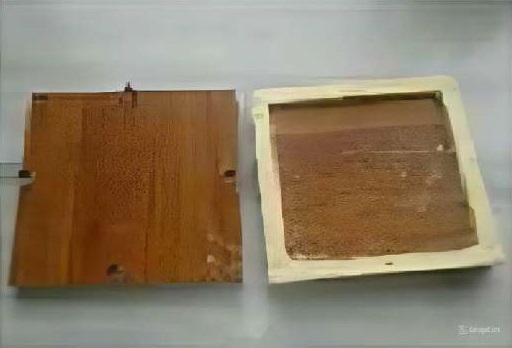
Fig. 1. Wooden sample mold
The dimensions of the wooden mold: 150´150´10 mm. Transparent glue was applied to the bottom and inner surface of the lid to prevent the mixture from sticking to the mold. After pouring the mixture, the lid was attached with four screws.
Table 1 shows samples with different ratios of polyurethane components.
Table 1
Polyurethane Components in the Samples, %
|
Sample No. |
Component |
|||
|
4 |
3 |
2 |
1 |
|
|
65 |
63 |
60 |
50 |
Isocyanate |
|
35 |
37 |
40 |
50 |
Polyol |
At the second stage, the optimal ratios of isocyanate and polyol were selected and six new samples were made. 5% and 10% of coke coal, straw and foam were added to them (Table 2).
Table 2
Composition of Samples with Fillers, %
|
10 |
9 |
8 |
7 |
6 |
5 |
Sample No. |
|
60 |
62 |
60 |
62 |
60 |
62 |
Isocyanate |
|
30 |
33 |
30 |
33 |
30 |
33 |
Polyol |
|
Coal — 10 |
Coal — 5 |
Straw —10 |
Straw — 5 |
Foam —10 |
Foam — 5 |
Additive |
Thermal Testing. We used an HTC device (Highlight Tech Corp, China), which allowed us to determine thermal conductivity using the hot plate method in accordance with the American standard ASTM C1771 (Fig. 2).

Fig. 2. Device for determining the coefficient of thermal conductivity
The device took into account the current and the applied voltage, and therefore measured heat flux Q between different sides of the sample, as well as temperature difference ∆T between its upper and lower surfaces. Knowing the dimensions of the sample (area A and thickness l), it was possible to determine coefficient of thermal conductivity λ:
 (1)
(1)
To ensure accuracy of the results, the device was pre-calibrated using three reference samples made of polystyrene, polyethylene and foam with known thermal conductivity [10]. After that, a calibration graph was constructed (Fig. 3).
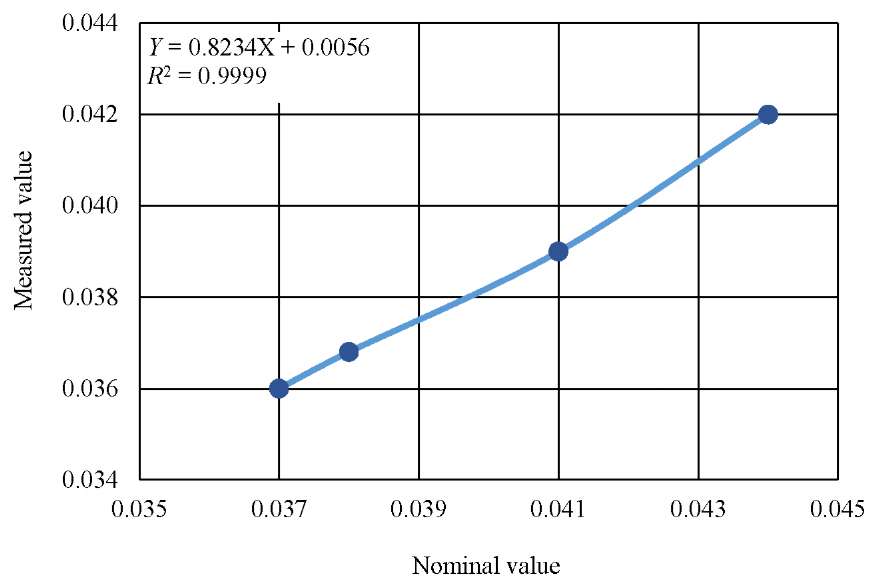
Fig. 3. Calibration graph of the device for measuring thermal conductivity:
R² — coefficient of determination; Y — variable value
The total error in measuring the coefficient was 5–7%.
Compression Test. The compression test was performed in accordance with ISO 8442. A device was used (Fig. 4), which allowed applying a compression load of up to 5,000 N to the surface of the sample at a given speed. A load at a rate of 1 mm/min was applied to the samples with sides of 10×10 mm until deformation appeared. The results were recorded by a computer connected to the device with special software.
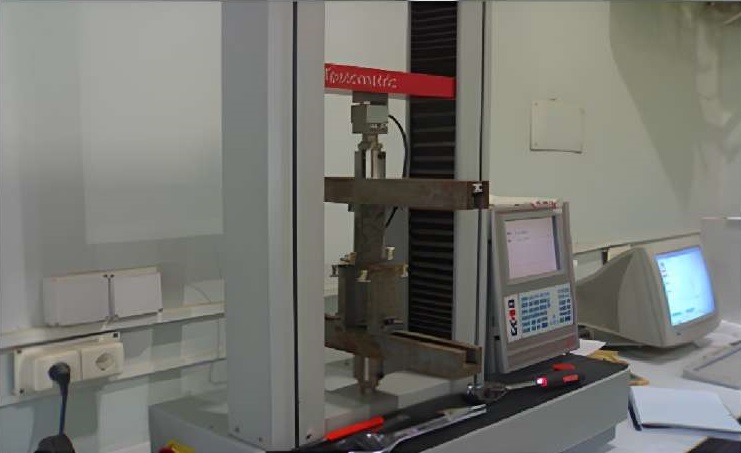
Fig. 4. Compressive strength testing device
Density Determination. To determine the samples density in accordance with ASTM C16223 standard, the weight and volume ratios were calculated. To do this, we used:
- scales with an accuracy of ±0.001 g (Fig. 5а),
- vernier calipers with an accuracy of ±0.01 mm (Fig. 5b).
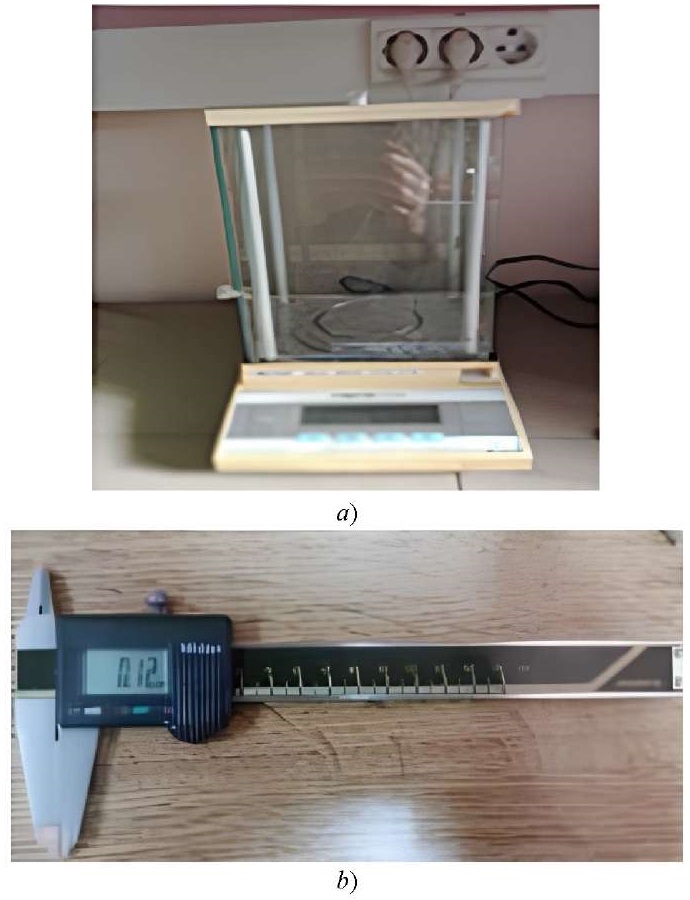
Fig. 5. Devices for determining density:
a — scales; b — vernier calipers
Thus, the volume was calculated with an accuracy of ±0.01 mm³, and then the sample density was determined using the formula:
 (2)
(2)
where m — mass of the sample, kg; v — volume of the sample, mm.
Water Absorption Determination. To determine water absorption of the samples, they were immersed in water for a certain period of time. It was done in accordance with ASTM D28424 standard. The percentage of water absorption was calculated by taking the difference in weight between the sample before and after being immersed, and dividing it by the initial weight of the sample.
Sound Absorption Determination. To measure the sound absorption coefficient, a device was used that operated on the “transmitter —receiver” principle in accordance with ISO 10534-15 (Fig. 6).
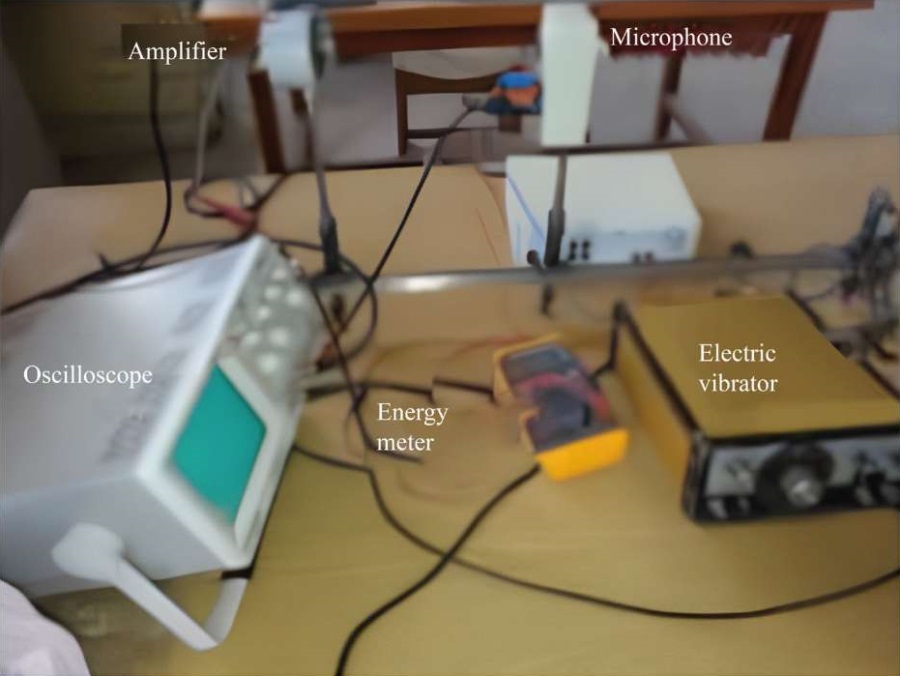
Fig. 6. A device for measuring the sound absorption coefficient
The sample was placed between a sound transmitter and a receiver, and a sound wave with certain energy was sent. The wave’s energy was then measured, the frequency range was scanned and analyzed, and the sound absorption coefficient was determined.
Equipment set:
- dual electronic oscilloscope;
- vibrator with a frequency range (1–10 kHz);
- carbon amplifier for transmitting sound waves;
- microphone for receiving sound waves;
- metal bases for mounting the amplifier and microphone;
- bridge on which the amplifier and microphone slide;
- energy meter.
Knowing the wave energy before and after sample installation, it was possible to calculate the sound absorption coefficient:
 (3)
(3)
where α — sound absorption coefficient; E — wave energy after sample installation (volts); E0 — wave energy before sample installation (volts).
Results
Density. Figure 7 shows the results of determining the density of the tested samples.
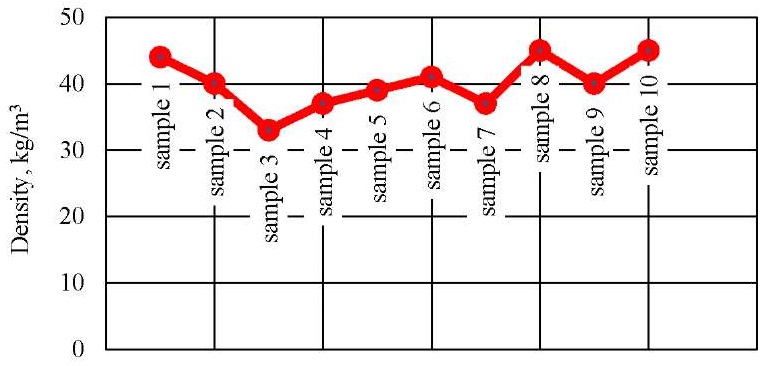
Fig. 7. Comparison of samples by density
The lowest density of sample 3 (33 kg/m³) was explained by the absence of fillers and the uniformity of its structure. The addition of fillers, especially in a volume of 5%, did not significantly affect the density. This was due, firstly, to the insignificant proportion of the additive. Secondly, the density of additives (especially straw and foam) was close to the density of polyurethane without additives.
Water Absorption. The results of water absorption tests are shown in Figure 8.
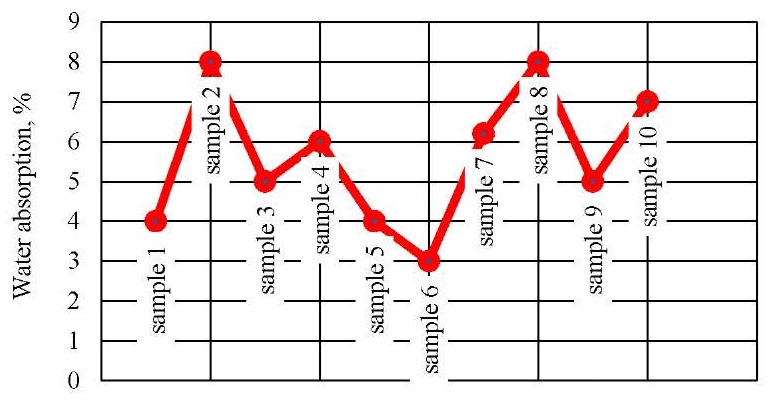
Fig. 8. Comparison of samples by water absorption
A low level of water absorption was recorded in samples without additives (50% isocyanate and 50% polyol) and with the addition of 5% foam (62% isocyanate and 33% polyol). With an increase in the proportion of isocyanate, the water absorption level increased, especially in samples 8 and 10 with 10% straw and coal. This was consistent with the results obtained by other researchers [11]. Sample 2 deviated from the general rule, which may be related to the specifics of its preparation. It is known that straw actively absorbs water. Accordingly, the water absorption is higher for samples with straw. When foam granules were added, on the contrary, water absorption decreased due to the high resistance of this material to water. For this reason, the minimum water absorption was observed for sample 6.
Thermal Properties. Figure 9 provides the results of thermal tests of the samples.
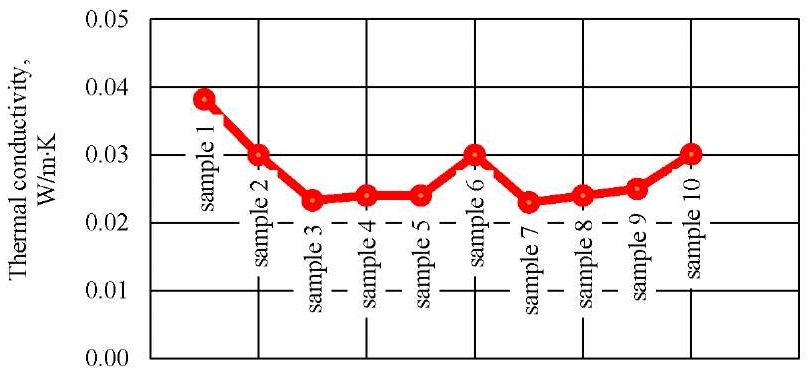
Fig. 9. Comparison of samples by thermal conductivity
The coefficient of thermal conductivity of samples without additives increased with an increase in the proportion of polyol. With high polyol content, the contact between the components improved, the cell sizes decreased, and the density increased. Dense materials provided more efficient heat transfer, i.e. they had higher thermal conductivity [12]. The addition of foam and coal in high concentrations also increased density and significantly increased thermal conductivity [13]. Adding fillers in small quantities, on the contrary, could improve thermal conductivity. For example, when adding foam and straw in the amount of 5%, it was possible to reduce the values of thermal conductivity to 0.023 W/m·K. The author of [14] obtained almost the same result of 0.024 W/m·K.
Compressive Strength. Figure 10 shows the results of determining the compressive strength.
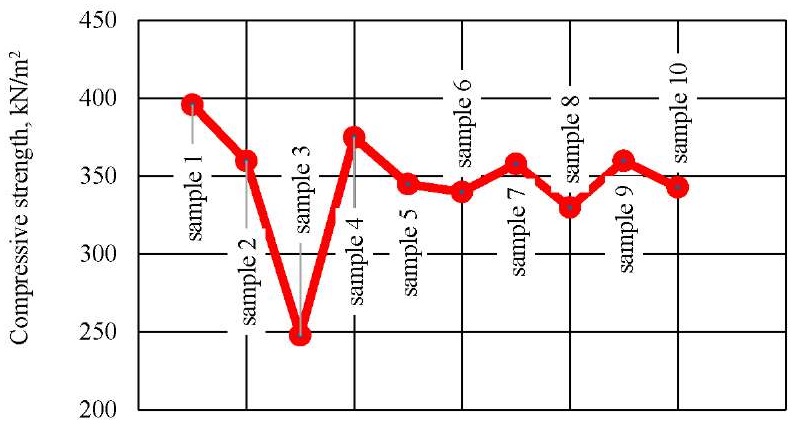
Fig. 10. Comparison of samples by compressive strength
Compressive strength was proportional to density of the material; therefore, in samples without additives, it increased with increasing polyol content. With the addition of 5% straw and coal, the compressive strength was high due to the uniformity of the cellular structure. With the addition of 10% filler, the mechanical strength decreased due to a decrease in the internal binding force of the sample.
Acoustic Characteristics. Figure 11 shows the results of sound absorption tests.
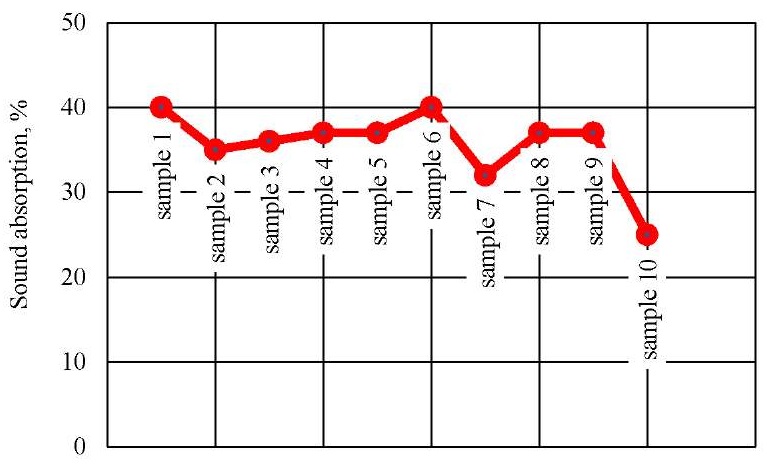
Fig. 11. Comparison of samples by sound absorption
Among the samples without fillers, the densest one had the best score — 1. With a low additive content (5%), sound absorption increased due to the homogeneous cellular structure. With a higher level of additives (10%), it decreased due to insufficiently strong bonds in the sample material.
Discussion and Conclusion. The results of the research allow us to draw the following conclusions.
- The addition of fillers in a certain amount can improve thermal, mechanical and acoustic properties of polyurethane.
- An increase in the proportion of additives generally worsens the studied properties and may increase water absorption. This happens when adding straw.
- To achieve optimal results, it is recommended to add 5% straw to polyurethane, consisting of 62% isocyanate and 33% polyol. Thermal conductivity of this sample (number 7) was 0.023 W/m·K with a density of 37 kg/m³ and a compressive strength of 358 kN/m².
- The values of thermal conductivity and mechanical strength of sample 7 are better by 2% and 4%, respectively, compared with the sample without additives (number 3).
- The advantages of sample 7 should also include its lower cost. Straw is cheaper than the main components of polyurethane.
In the future, it is planned to study other fillers in terms of their effect on the properties of polyurethane.
1. ASTM C177–19. Standard Test Method for Steady-State Heat Flux Measurements and Thermal Transmission Properties by Means of the Guarded-Hot-Plate Apparatus. URL: https://www.astm.org/c0177-19.html (accessed: 05.12.2024).
2. ISO 844:2021. Standard Practice for Verification of Testing Frame and Specimen Alignment under Compressive Axial Force Application. URL: https://cdn.standards.iteh.ai/samples/73560/24ff667df32b4981b29aa870b385bba2/ISO-844-2021.pdf (accessed: 05.12.2024).
3. ASTM-C1622:2005-Standard. Test Method for Apparent Density of Rigid Cellure Plastics. URL: https://pdfstandards.shop/product/publishers/astm/astm-c1622-4/ (accessed: 05.12.2024).
4. ASTM D2842–19. Standard Test Method for Water Absorption of Rigid Cellular Plastics. URL: https://www.astm.org/d2842-19.html (accessed: 05.12.2024).
5. ISO 10534–1:1996. Acoustics — Determination of sound absorption coefficient and impedance in impedance tubes. URL: https://cdn.standards.iteh.ai/samples/18603/3bfc0004b5024b2f9d8e3f19879aaf61/ISO-10534-1-1996.pdf (accessed: 05.12.2024).
References
1. Estravís S, Tirado-Mediavilla J, Santiago-Calvo M, Ruiz-Herrero JL, Villafañe F, Rodríguez-Pérez MÁ. Rigid Polyurethane Foam with Infused Nanoclays: Relationship between Cellular Structure and Thermal Conductivity. European Polymer Journal. 2016;80:1–15. https://doi.org/10.1016/j.eurpolymj.2016.04.026
2. Hu Zhang, Wen-Zhen Fang, Yue-Ming Li, Wen-Quan Tao. Experimental Study of the Thermal Conductivity of Polyurethane Foam. Applied Thermal Engineering. 2017;115:528–538. http://doi.org/10.1016/j.applthermaleng.2016.12.057
3. Sair S, Oushabi A, Kammouni A, Tanane O, Abboud Y, El Bouari A. Mechanical and Thermal Conductivity Properties of Hemp Fiber Reinforced Polyurethane Composites. Case Studies in Construction Materials. 2018;8:203–212. https://doi.org/10.1016/j.cscm.2018.02.001
4. Zieleniewska M, Leszczyński MK, Szczepkowski L, Bryśkiewicz A, Krzyżowska M, Bień K, et al. Development and Application Evaluation of the Rigid Polyurethane Foam Composites with Egg Shell Waste. Polymer Degradation and Stability. 2016;132:78–86. https://doi.org/10.1016/j.polymdegradstab.2016.02.030
5. Eren Komurlu, Ayhan Kesimal. Experimental Study of Polyurethane Foam Reinforced Soil used as a Rock-Like Material. Journal of Rock Mechanics and Geotechnical. 2015;7(5):566–572. https://doi.org/10.1016/j.jrmge.2015.05.004
6. Nontawat Kraitape, Chanchai Thongpin. Influence of Recycled Polyurethane Polyol on the Properties of Flexible Polyurethane Foam. Energy Procedia. 2016;89:186–197. https://doi.org/10.1016/j.egypro.2016.05.025
7. Bryśkiewicz A, Zieleniewska M, Przyjemska K, Chojnacki P, Ryszkowska J. Modification of Flexible Polyurethane Foam by the Addition of Natural Origin Fillers. Polymer Degradation Stability. 2016;132(1):1–9. https://doi.org/10.1016/j.polymdegradstab.2016.05.002
8. Nastaran Nazeran, Jafarsadegh Moghaddas. Synthesis and Characterization of Silica Aerogel Reinforced Rigid Polyurethane Foam for Thermal Insulation Application. Journal of Non-Crystalline Solids. 2017;461:1–11. https://doi.org/10.1016/j.jnoncrysol.2017.01.037
9. Formela K, Hejna A, Zedler Ł, Przybysz M, Ryl J, Saeb M, et al. Structural, Thermal and Physico-Mechanical Properties of Polyurethane/ Brewers' Spent Grain Composite Foams Modified with Ground Tire Rubber. Industrial Crops and Products. 2017;108:844–852. https://doi.org/10.1016/j.indcrop.2017.07.047
10. Nicholas JV, White DR. Traceable Temperatures: An Introduction to Temperature Measurement and Calibration. 2ed. Chichester: Wiley; 2001. 400 p.
11. Sripathy M, Sharma KV. Flammabillity and Moisture Absorption Test of Rigid Polyurethane Foam. International Journal of Scientific & Engineering Research. 2013;4(2):1–8. URL: https://www.ijser.org/researchpaper/Flammability-and-Moisture-absorption-test-of-rigid-polyurethane-foam.pdf (accessed: 05.12.2024).
12. Ramnas O, Jarfelt U. Thermal Conductivity of Polyurethane Foam Best Performance. In: 10th International Symposium on District Heating and Cooling, Hannover, September 3–5, 2006. URL: https://lsta.lt/files/events/28_jarfelt.pdf (accessed: 05.12.2024).
13. Chan Wen Shan, Maizlinda Izwana Idris, Mohd Imran Ghazali. Study of Flexible Polyurethane Foam Reinforced with Coir Fibres and Tyre Particles. International Journal of Applied Physics and Mathematics. 2012;2(2):123–130. http://dx.doi.org/10.7763/IJAPM.2012.V2.67
14. Kpele Y. Rationalizing Energy Consumption by Improving the Specifications of Thermal Insulation Materials. Latakia: Tishreen University; 2009, 130 p.
About the Author
I. R. AntibasRussian Federation
Imad R. Antibas, Cand. Sci. (Eng.), Associate Professor of the Fundamentals of Machinery Design Department
1, Gagarin Sq., Rostov-on-Don, 344003
Review
For citations:
Antibas I.R. The Use of Straw, Coal and Foam to Improve Thermal and Mechanical Properties of Polyurethane. Safety of Technogenic and Natural Systems. 2025;9(1):72-80. https://doi.org/10.23947/2541-9129-2025-9-1-72-80. EDN: KPYSHG








































